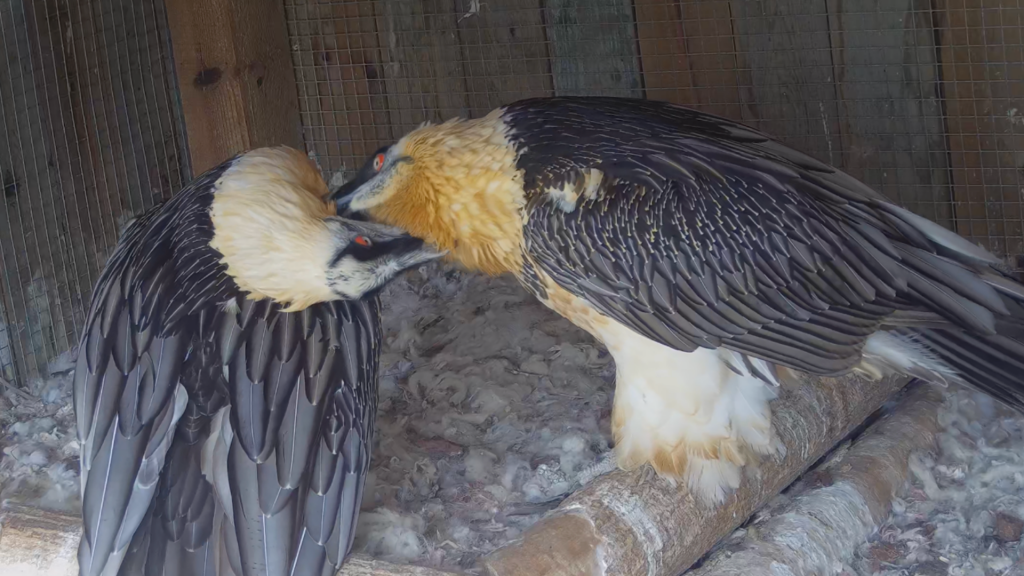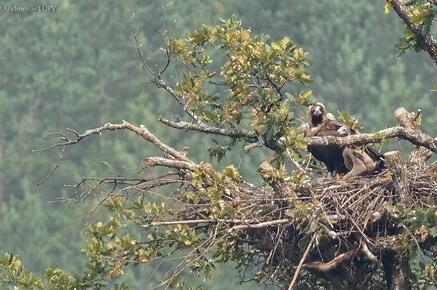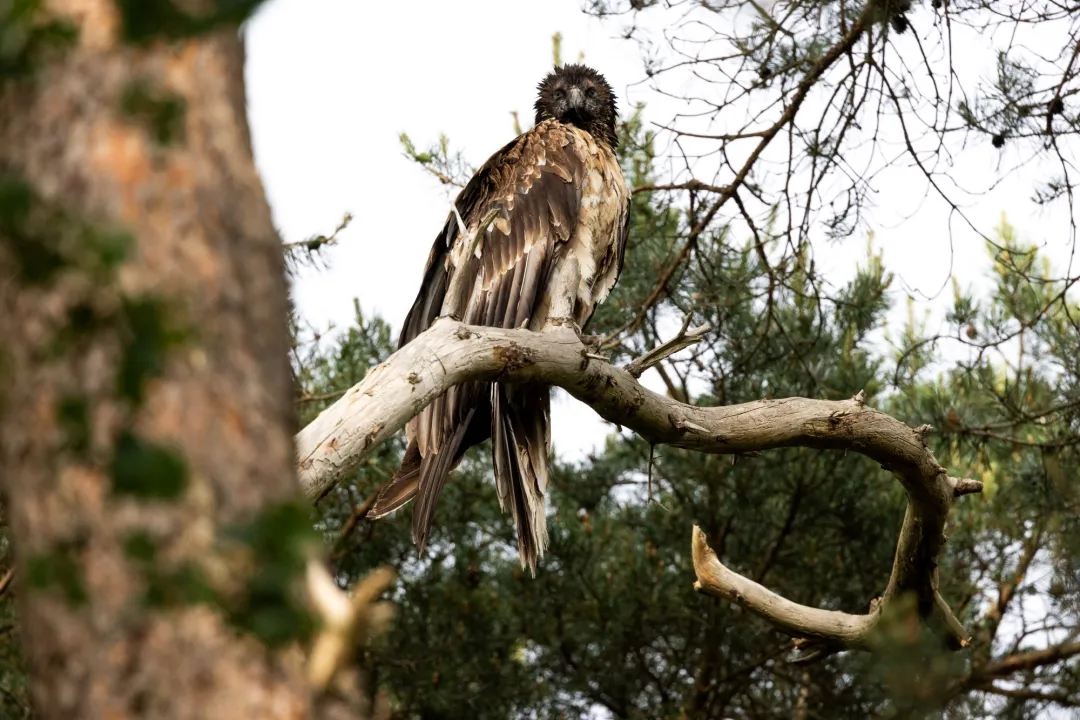The breeding season for our Bearded Vultures (Gypaetus barbatus) within the Captive Breeding network is progressing smoothly and efficiently. After the first egg was laid this year on 4 December at Richard Faust Zentrum, there is exciting news from our specialised breeding centres in Spain, Vallcalent and Guadalentín.
Watch Bearded Vulture Marie Antoinette laying her first egg of this season at Vallcalent
This 2-minute video shows Marie Antoinette, a 34-year-old Bearded Vulture, laying her first egg of the season. She is usually the first laying at Vallcalent, and together with Joseph, they are the only truly experienced pair living in the specialised breeding centre in Lleida, Spain, which we manage at the Vulture Conservation Foundation.
In the video, it is curious to see Joseph’s behaviour as Marie Antoinette starts lifting her tail, a sign she is about to lay her first clutch of the season. Notoriously excited, he approaches the female, showing that he is ready to incubate! Experienced males are always eager to share incubation tasks and are devoted fathers once the chick hatches.
This is how Joseph shows his excitement. Males always react differently, which is why it is so important to study the personal behaviour of each Bearded Vulture in captivity.
Àlex Llopis, Manager of VCF Captive-breeding centres and Coordinator of the Bearded Vulture EEP
Meet Bearded Vultures Marie Antoinette and Joseph
Marie Antoinette was born in 1989 and released in the French Alps, where she reached maturity and even bred in the wild until 2005. Unfortunately, she suffered a collision with a powerline and damaged her wing. With the injury, she would never strive in the wild again; it is what we call an “unreleasable” bird.
She was taken to Asters, where she was paired with Joseph (born in 1998). There, they laid several eggs, but most of them broke. When a pair within the Bearded Vulture Captive Breeding Network faces difficulties, the teams are directed to Vallcalent or Richard Faust Zentrum.
Vallcalent, a breeding centre for “difficult” cases
The pair arrived at Vallcalent in 2016, and Àlex realised that sometimes she walked limping. Her left leg was damaged too, so she couldn’t dig a proper bowl; that’s why many of her eggs rolled and broke in Asters. Since then, her eggs have been incubated artificially, and the pair is given a dummy egg.
“When the egg hatches, they are given a chick to rear – and they have proved to be excellent parents, very sweet and caring with their babies and between them, too. The way they take care of each other and their babies melts my heart.”
Carmen Calero, VCF Bearded Vulture Captive-Breeding Assistant
It’s pretty usual to observe Joseph feeding his disabled lady, a behaviour that is quite difficult to see; sometimes, he even feeds the chick and Marie Antoinette at the same time!

The Bearded Vulture EEP
Àlex, the VCF coordinator of the Vallcalent Breeding Unit and of the Bearded Vulture Captive Breeding Network (Bearded Vulture EEP), has the difficult task of matching every single pair of the network. Currently, 182 Bearded Vultures are spread in more than 80 institutions, mainly Zoos and specialised centres.
Meanwhile, on 20 December, at 9:32, Mesa laid her first egg of this season too, in Vallcalent. In Guadalentin, the specialised breeding centre, which is also managed by us at the VCF under an agreement with Junta de Andalusia, three eggs have already been laid this season. The first egg was laid by Nava on 9 December, whilst last Sunday, 17 December, Keno laid her first egg, and Nava laid her second.
Stay tuned, as we will be following the breeding season from close!




